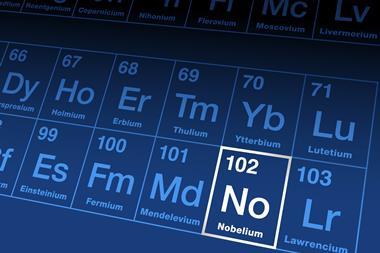The first estimate of superheavy element flerovium’s melting point predicts that it is likely a liquid at room temperature. And although element 114 has a closed-shell configuration similar to a noble gas, computational simulations are now showing it does not behave as such in many ways.
Less than 100 flerovium atoms have ever been observed – it can only be produced by fusing atoms of lighter elements together in high-energy collisions and its most stable isotope has a half life of only around two seconds. While scientists have performed some chemical experiments with superheavy elements, such as adsoption tests, exploring their bulk properties is usually not possible. Different experiments and calculations variously predicted flerovium to behave more like a noble gas or a volatile metal.
After doing sophisticated computational simulations of up to 500 atoms at once, researchers in New Zealand and Germany have now concluded that flerovium is a volatile liquid that melts at around 11°C (±50°C).
Although flerovium is expected to be chemically more inert than the lighter elements in its group, it isn’t as inert as a noble gas. A flerovium dimer has a ‘chemical bond’ between the atoms that is of similar nature to the ‘bond’ in dihelium – as in it’s not a bond that can be explained with molecular orbital theory. For solid flerovium, the researchers predict two structures: layered hexagonal sheets or one-dimensional chains. It is likely a semiconductor with an electronic band gap similar to solid argon.
References
E Florez et al, J. Chem. Phys., 2022, 157, 064304 (DOI: 10.1063/5.0097642)

















No comments yet